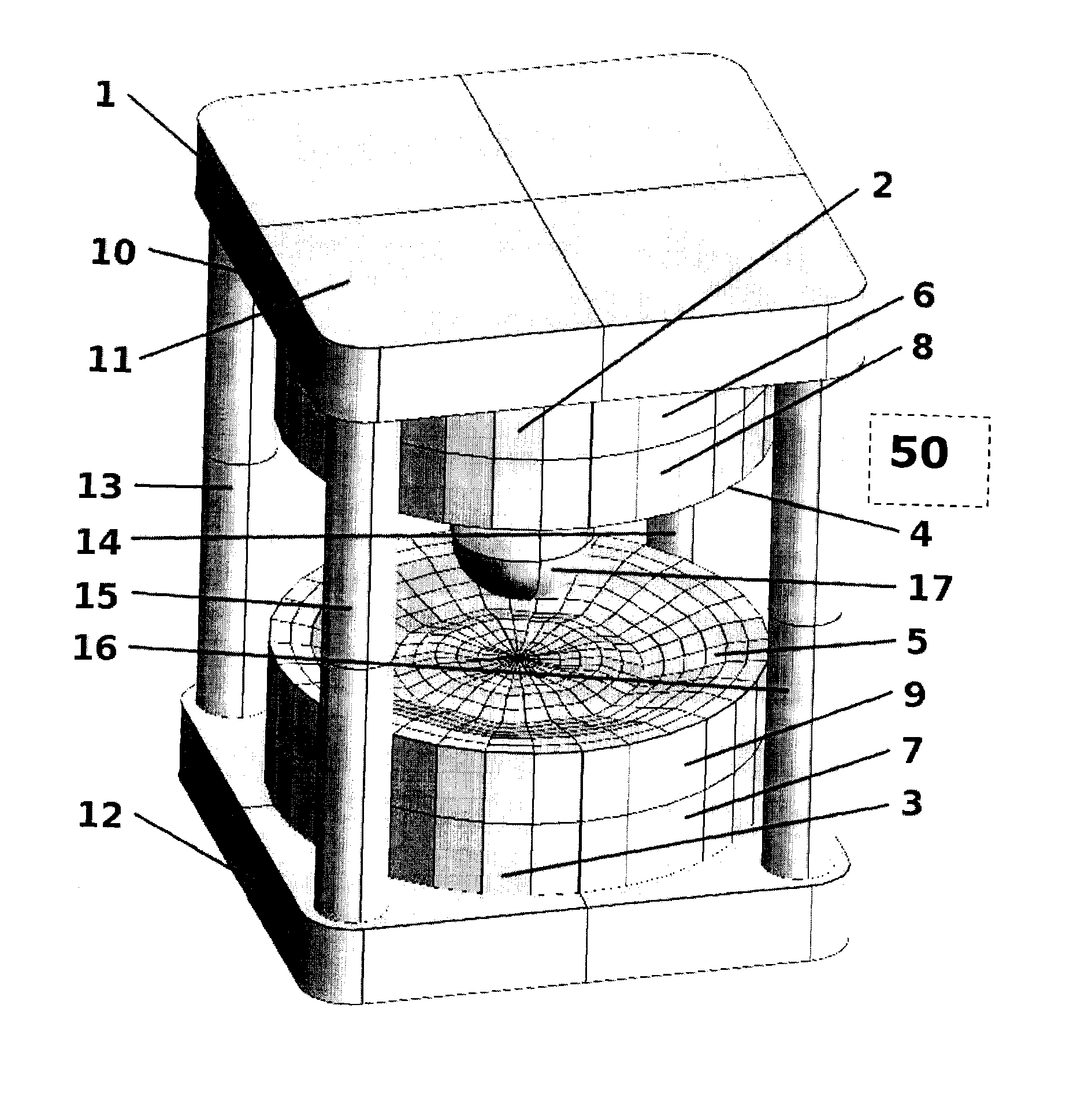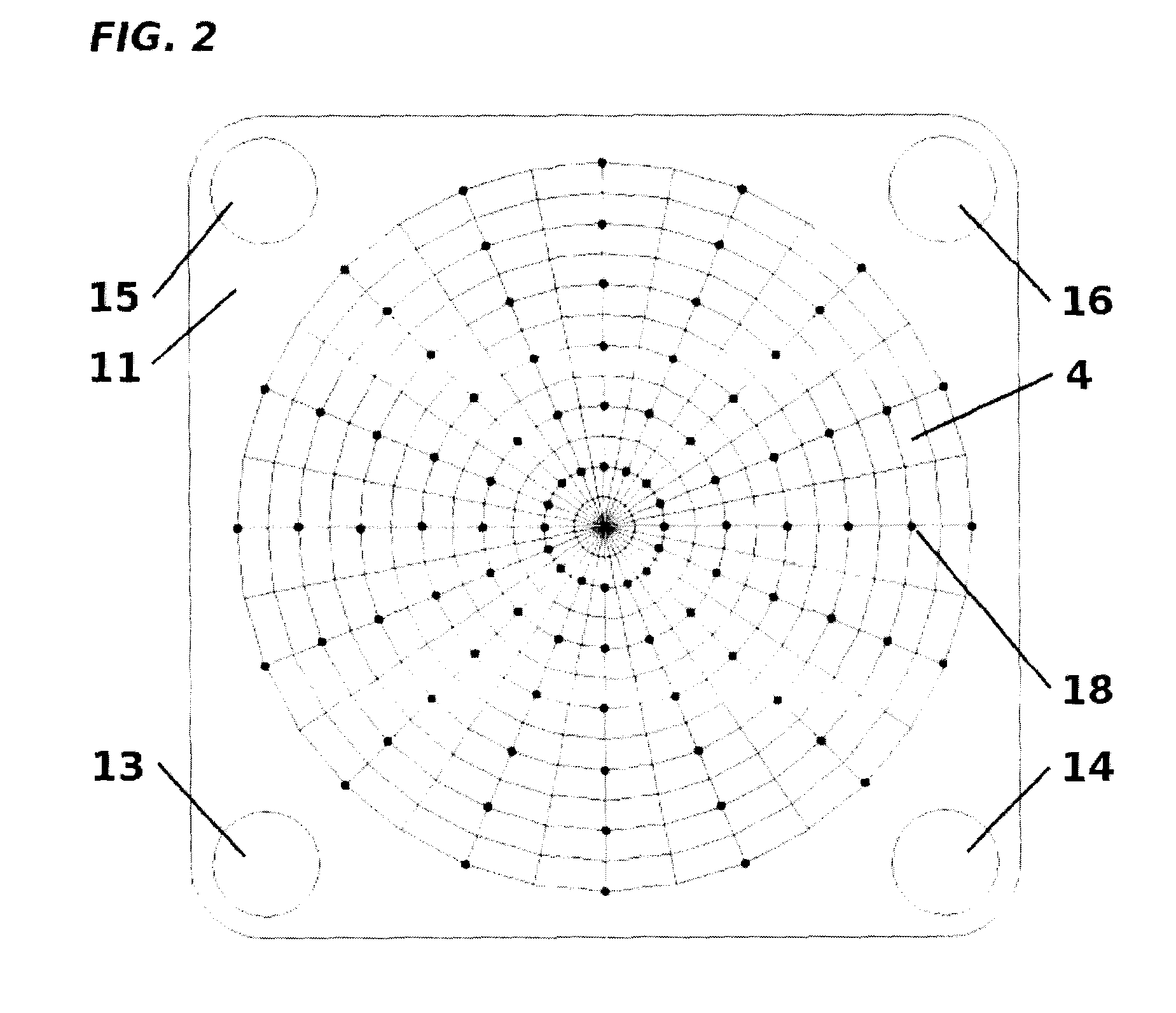Magnetic assembly and method for defining a magnetic field for an imaging volume
a magnetic field and imaging volume technology, applied in the field of magnetic fields, can solve the problems of limited effectiveness, especially detrimental distortion, and geometric distortion in the resulting image, and achieve the effects of reducing the perturbation of patient dosimetry, reducing the size, and reducing the inhomogeneity of axisymmetric and/or non-axisymmetric field
- Summary
- Abstract
- Description
- Claims
- Application Information
AI Technical Summary
Benefits of technology
Problems solved by technology
Method used
Image
Examples
Embodiment Construction
[0053]Referring now to the drawings wherein like numerals indicate like elements throughout, FIGS. 1-4 show a magnet assembly 1 according to an embodiment. In this embodiment, magnet assembly 1 includes a first ferromagnetic pole assembly 2 and a second ferromagnetic pole assembly 3. The first and second ferromagnetic pole assemblies 2, 3 are arranged in a fixed, spaced relationship with one another as “biplanar” magnets thereby to define a space therebetween that encompasses an imaging volume 17 and is large enough to receive an object (not shown) to be imaged at the imaging volume 17. The magnet assembly 1 is “open” as the object to be imaged can be moved between the pole assemblies 2, 3 to be positioned at the imaging volume 17.
[0054]In this embodiment, each of the first and second pole assemblies 2, 3 comprises both a cylindrical permanent magnet piece 6 (7) and a substantially cylindrical ferromagnetic piece 8 (9). The permanent magnet piece 6 (7) and substantially cylindrical ...
PUM
| Property | Measurement | Unit |
|---|---|---|
| static magnetic field | aaaaa | aaaaa |
| magnetic field strengths | aaaaa | aaaaa |
| magnetic field | aaaaa | aaaaa |
Abstract
Description
Claims
Application Information
 Login to View More
Login to View More - R&D
- Intellectual Property
- Life Sciences
- Materials
- Tech Scout
- Unparalleled Data Quality
- Higher Quality Content
- 60% Fewer Hallucinations
Browse by: Latest US Patents, China's latest patents, Technical Efficacy Thesaurus, Application Domain, Technology Topic, Popular Technical Reports.
© 2025 PatSnap. All rights reserved.Legal|Privacy policy|Modern Slavery Act Transparency Statement|Sitemap|About US| Contact US: help@patsnap.com



